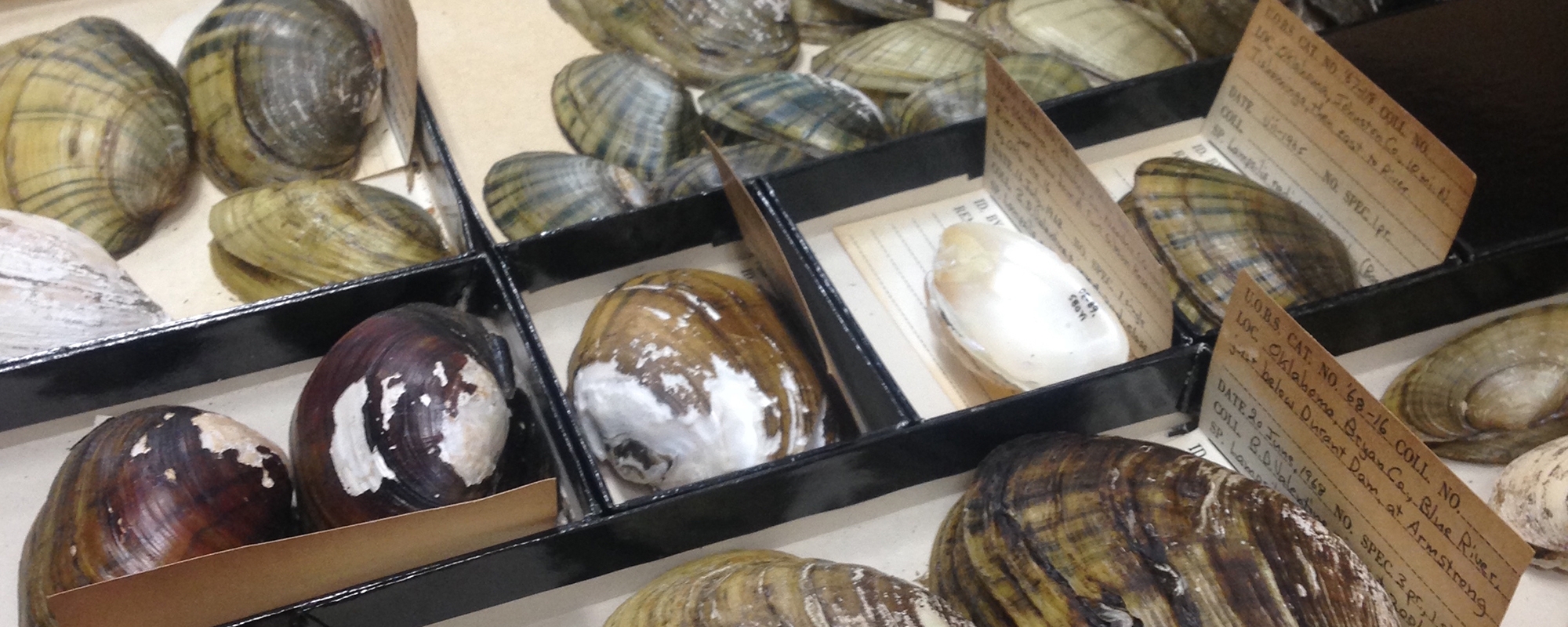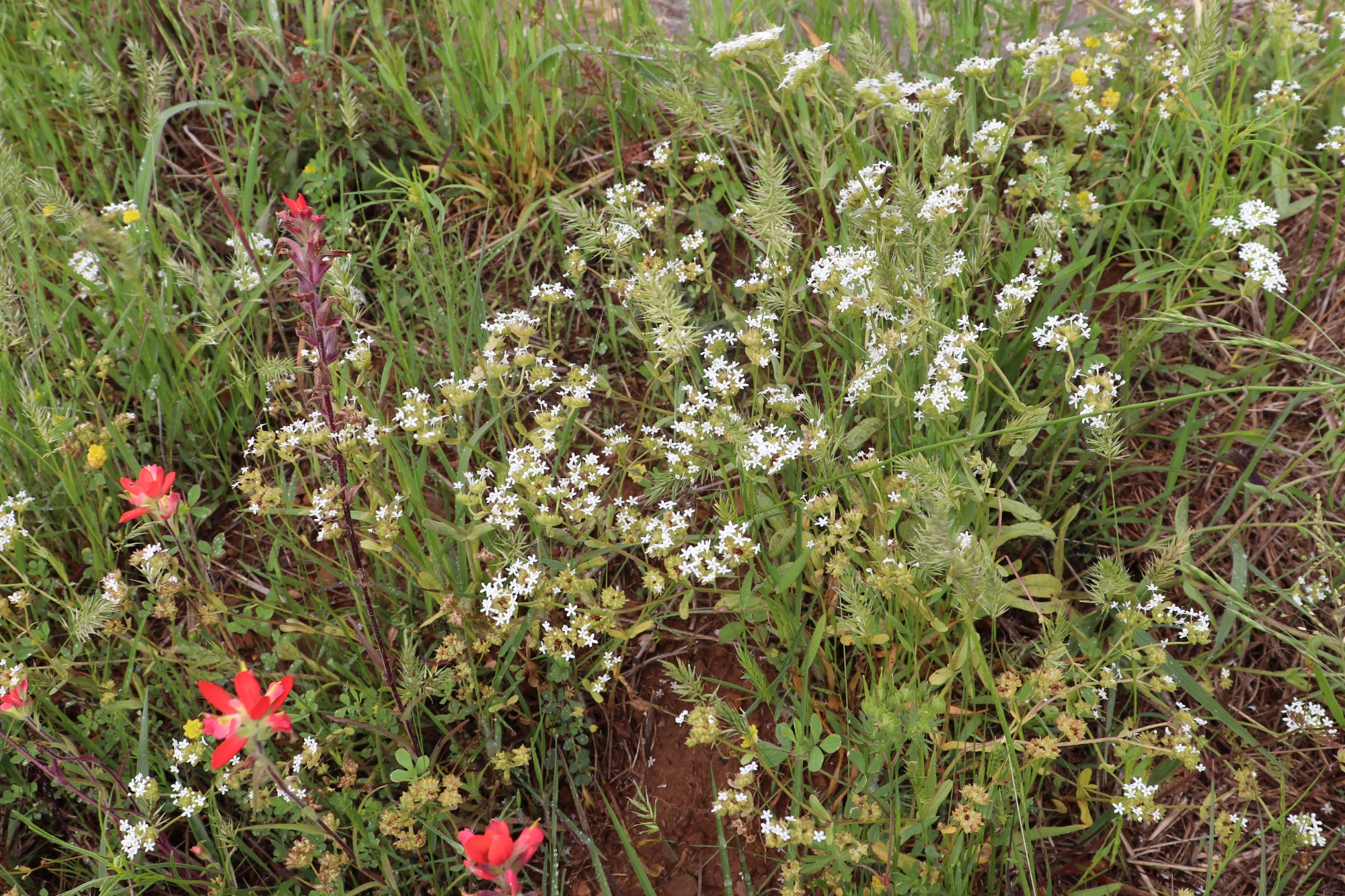
The Oklahoma Biological Survey and the Oklahoma Natural Heritage Inventory maintain the central repository for information on Oklahoma's biodiversity and natural heritage. We are charged with maintaining dynamic, georeferenced information on the state's biological diversity, including rare and endangered species, species of special concern, and significant ecological communities.
The Oklahoma Natural Heritage Inventory (ONHI) is the state's central repository for information on Oklahoma's natural heritage. Established in 1977, ONHI was among among the first natural heritage programs in the U.S. and was integrated into the Oklahoma Biological Survey and the University of Oklahoma in 1987.
ONHI is charged with maintaining dynamic, georeferenced information on the state's biological diversity, including rare and endangered species, species of special concern, and significant ecological communities. ONHI also provides information resulting from surveys, studies, and other sources to the people of the state for resource management, research, and education.
ONHI biologists conduct field inventories to find and evaluate occurrences of rare species and communities throughout the state. Biologists record map coordinates, habitat information, and population data at each occurrence of an element.
Information about rare species and communities from other sources, including natural resource agencies, conservation groups, published literature, and private individuals is also sought by ONHI biologists.
The Robert Bebb Herbarium (OKL) is maintained jointly by the Oklahoma Biological Survey and the School of Biological Sciences at the University of Oklahoma. The herbarium houses the largest collection of Oklahoma plants in the state. Specimens exceed 250,000 in number, with extensive collections of the families Poaceae, Asteraceae, Fabaceae, and Cyperaceae.
Check out the virtual BioBlitz! OK projects on iNaturalist and download the observed species lists from our in-person weekends.


The Game Types of Oklahoma and A Game Type Map of Oklahoma, prepared by L. G. Duck and Jack B. Fletcher, was an early effort to describe and map the natural vegetation of the state. The continued use of A Game Type Map of Oklahoma as a potential natural vegetation map demonstrates the high quailty of their work. By providing descriptions of the Oklahoma landscape immediately following the "dust bowl" era of the 1930's, these works are of historical interest. Information provided in The Game Types of Oklahoma is not restricted to vegetation and game animals. Duck and Fletcher included details regarding land use characteristics, agricultural practices and demographics.
Citation for this Web Document:
Duck, L. G., and J. B. Fletcher. 1945. A survey of the game and furbearing animals of Oklahoma; Chapter 2, The Game Types of Oklahoma. Oklahoma Game and Fish Commission, Division of Wildlife Restoration and Research. Oklahoma City.
The Game Types of Oklahoma and A Game Type Map of Oklahoma, prepared by L. G. Duck and Jack B. Fletcher, was an early effort to describe and map the natural vegetation of the state (see also Bruner 1931, Blair and Hubbell 1938). The continued use of A Game Type Map of Oklahoma as a potential natural vegetation map by educators and state agencies marks the success of their effort. By providing descriptions of the Oklahoma landscape immediately following the "dust bowl" era of the 1930's, these works are of historical interest. Information provided in The Game Types of Oklahoma was not restricted to vegetation and game animals. Duck and Fletcher included information regarding land use characteristics, agricultural practices and demographics.
Originally, the two documents were published separately. The Game Types of Oklahoma appeared in a longer report, A Survey of Game and Furbearing Animals in Oklahoma (1943), published by the Oklahoma Game and Fish Commission's (now the Oklahoma Department of Wildlife Conservation) Division of Wildlife Restoration and Research. The vegetation descriptions provided in The Game Types of Oklahoma elaborate the A Game Map of Oklahoma map units. These works of Duck and Fletcher are brought together on this Worldwide Web Site for two reasons; (1) access: existing copies of The Game Types of Oklahoma are difficult to acquire (copies of the report can be found at only a few libraries in Oklahoma) and (2) to acquaint a broader audience with Duck and Fletcher and the vegetation of Oklahoma.
In preparing this document, I minimized editorial changes to preserve the authors' voice. I updated plant synonymy and provided scientific binomials for all plants originally listed only by common name. The following references used were: Waterfall 1979, Taylor and Taylor 1991, Kartesz 1994. Additional information on the vegetation of Oklahoma can be found in Johnson and Milby 1989 and Hoagland 2000.
Bruce W. Hoagland
Literature Cited:
Blair, W. F., and T. H. Hubbell. 1938. The biotic districts of Oklahoma. American Midland Naturalist 20: 425-454.
Bruner, W. E. 1931. The vegetation of Oklahoma. Ecological Monographs 1: 100-188.
Hoagland, B.W. 2000. The vegetation of Oklahoma: a classification of landscape mapping and conservation planning. Southwestern Naturalist 45: 385-420.
Johnson, F. L. and T. H. Milby. 1989. Oklahoma botanical literature. University of Oklahoma Press, Norman, OK, USA.
Kartesz, J. T. 1994. A synonymized checklist of the vascular flora of the United States, Canada, and Greenland, volume 1 - checklist. Timber Press. Portland, Oregon.
Taylor, J. R. And C. E. S. Taylor. 1991. An annotated list of the ferns, fern allies, gymnosperms, and flowering plants of Oklahoma. Biology Department Herbarium. Southeastern Oklahoma State University, Durant.
Waterfall, U. T. 1979. Keys to the flora of Oklahoma. Oklahoma State University. Stillwater.
Acknowledgements: I express my appreciation to Pam Pogorelc for typing and secreterial assistance and to Dr. Forrest Johnson for technical assistance.
Due to the wide diversification in game habitat in Oklahoma, an understanding of the character and extent of these conditions today is essential to those who expect to successfully manipulate game populations to the best interest of the people. Oklahoma is so situated within the nation as to enclose that portion of the continent where the eastern forests merge with the prairies and plains of the west. This is reflected in the presence of game species typical of both the eastern forests and the western grasslands within the confines of the state.
A review of the existing studies of the biological and physical land features showed that any one study within itself was not adaptable to practical game management problems. A map of more detail, as well as one with more varied emphasis was needed. So included within the survey outlines were facilities for mapping the game habitat of Oklahoma.
The map presented with this book is a result of actual field mapping correlated with prior studies concerning vegetation, geology, soils, climate, and land use in relation to game populations, and is, we believe, in sufficient detail for wide application in future game studies. Game habitat conditions in this work have been classified under three general headings. A total of twelve types have been defined of which five are forested, four are shrub grassland, and three are agricultural grassland types (Table 1).
It will be noticed throughout this report that particular topics are dealt with at some length under certain types and but briefly mentioned in others. Generally this results from the workers not being able to obtain information of equal detail for all type conditions. Rather than omit a discussion of importance simply because it was not available throughout, we have included such information here without regard to strict outline in hopes that it may be available at a later date.
The Game Type Map presented with this report is a generalized one, being scaled down from field copies which are one-half inch to the mile and in considerable detail.
Use of the Map
Post Oak - Blackjack
Oak - Hickory Forest
Bottomland Timber
Oak - Pine Forest
Loblolly Pine - Hardwood
Tallgrass Prairie
Mixed - Grass - Eroded Plains
Stabilized-dune
Shinnery - Grassland
Sandsage-grassland
Shortgrass - High Plains
Piñón - Juniper - Mesa
Literature Cited
We are working on an updated web version of the original manuscript. You can access the text and low resolution plates on our legacy website.